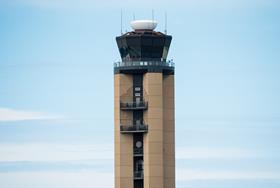The United States Congress has passed a comprehensive spending and tax bill that allocates $12.5 billion to the Federal Aviation Administration (FAA) for the modernization of air traffic control systems. This legislative move marks a significant step forward in one of President Donald Trump’s key policy initiatives, aiming to enhance the efficiency and safety of air travel across the nation.
The bill, which received bipartisan support, underscores the critical need to upgrade the aging infrastructure of the nation’s air traffic control. The modernization effort is expected to replace outdated radar technology with cutting-edge satellite-based systems, improving the precision and reliability of air traffic management.
Modernization: A Long-Awaited Move
The modernization of the air traffic control system has been a subject of discussion for decades, with experts and industry stakeholders advocating for an overhaul to meet the demands of increasing air travel. The current system, largely reliant on radar technology developed in the mid-20th century, has been criticized for its inefficiencies and limitations.
According to the FAA, the new satellite-based system, known as NextGen, will not only enhance safety but also reduce delays, improve fuel efficiency, and minimize environmental impact. The agency anticipates that these upgrades will support the growing number of flights and passengers projected in the coming years.
Industry and Expert Opinions
The aviation industry has welcomed the funding, with many seeing it as a necessary investment in the future of air travel. Airlines for America, an industry trade organization, praised the bill, stating that it “lays the groundwork for a safer, more efficient airspace.”
Experts in aviation technology have also highlighted the potential benefits of the modernization. Dr. Emily Thompson, a professor of aerospace engineering, noted,
“The transition to satellite-based systems is a game-changer for the industry. It’s akin to moving from analog to digital, offering unprecedented accuracy and control.”
Historical Context and Comparisons
The push for air traffic control modernization is not new. Similar efforts have been made in the past, but funding and political challenges have often stalled progress. In the 1980s, the Reagan administration attempted to implement reforms following the infamous air traffic controllers’ strike, but the initiative faced significant hurdles.
Comparatively, other countries have already made strides in modernizing their air traffic systems. For example, Australia and Canada have successfully implemented satellite-based navigation, setting a precedent for the United States to follow.
Implications and Future Steps
The passage of this bill represents a pivotal moment for the FAA and the aviation industry at large. As the modernization process unfolds, stakeholders will be closely monitoring the implementation to ensure that the ambitious goals are met within the projected timelines and budgets.
Looking ahead, the FAA plans to begin the initial phases of the NextGen rollout in the coming months, with full implementation expected over the next decade. The agency has committed to transparency and collaboration with industry partners to address potential challenges and optimize the benefits of the new system.
The modernization of air traffic control is poised to transform the landscape of air travel, promising a safer, more efficient, and environmentally friendly future. As the FAA embarks on this journey, the eyes of the aviation world will be watching closely.
